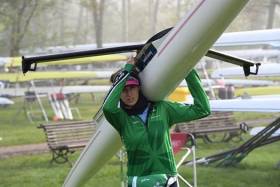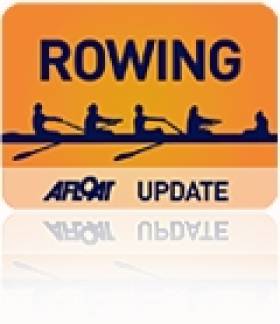Displaying items by tag: B Final
Walsh Wins B Final At World Cup Regatta
#Rowing: Denise Walsh won the B Final of the lightweight single sculls at the World Cup Regatta in Varese in Italy. The Skibbereen woman fought off Swiss and Algerian opponents to take seventh place overall at the event. Siobhán McCrohan, the second Ireland crew, withdrew.
World Cup Regatta, Varese – Day Two (Selected Results, Irish interest)
Men
Lightweight Four – C Final (places 13 to 16): 1 Canada One 6:09.73, 2 Serbia 6:11.21, 3 Austria 6:15.85, 4 Ireland (L Seaman, M O’Donovan, L Keane, S O’Driscoll) 6:16.00.
Lightweight Double Sculls – A/B Semi-Finals (First Three to A Final; rest to B Final) – Semi-Final One: 1 Ireland (P O’Donovan, G O’Donovan) 6:19.57, 2 Netherlands One 6:20.69, 3 Belgium One 6:20.85; 4 Poland One 6:22.21, 5 Switzerland One 6:24.99, 6 Portugal One 6:51.45. Semi-Final Two: 1 South Africa 6:19.42, 2 Spain 6:22.08, 3 Denmark 6:22.09; 4 Turkey 6:22.09.
Women
Pair – C Final (places 13 to 16): 1 Norway One 7:22.74, 2 Ukraine 7:23.16, 3 Ireland (L Kennedy, B O’Brien) 7:33.07.
Single Sculls – A/B Semi-Finals (First Three to A Final; rest to B Final) – Semi-Final One: 1 Ireland (S Puspure) 7:26.60, 2 Belarus Two (T Kukhta) 7:27.86, 3 Canada (C Zeeman) 7:29.01; 4 Ukraine 7:30.70, 5 Sweden 7:37.22, 6 Latvia 7:37.48. Semi-Final Two: 1 Belarus 7:29.10, 2 Switzerland 7:29.93, 3 China 7:31.28.
Lightweight Double Sculls – C Final (places 13 to 17): 1 Ireland (C Lambe, S Jennings) 7:17.24, 2 Italy Three 7:26.29, 3 Chile 7:29.71.
Lightweight Single Sculls – Repechage (First Two to A Final; rest to B Final): 1 Poland Two 7:49.90, 2 Switzerland One 7:51.76; 5 Ireland Two (S McCrohan) 8:04.69, 6 Ireland One (D Walsh) 8:08.81. B Final: 1 Ireland One (D Walsh) 7:50.00, 2 Switzerland 7:52.51, 3 Algeria 7:58.6.
#ROWING: The Ireland quadruple finished second in their B Final, eighth overall, at the European Junior Championships at Racice in the Czech Republic today. The Ireland crew of Colm Henessey, Eoghan Whittle, Patrick Munnelly and Andrew Goff had finished sixth in the A/B semi-final. The double of Shane O’Connell and Ronan Byrne were fourth in their C Final, 16th overall.
European Junior Rowing Championships, Racice, Czech Republic (Irish interest):
Men
Quadruple Sculls – A/B Semi-Final One: 6 Ireland (A Goff, P Munnelly, E Whittle, C Hennessy) 6:30.35. B Final (Places 7 to 12): 2 Ireland 6:23.993.
Double Sculls – C Final (Places 13 to 18): 4 Ireland (S O’Connell, R Byrne) 7:16.086.

























































